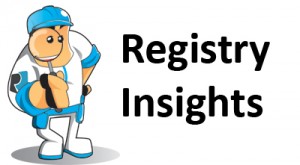-
-
products
-
resources
-
support
-
company
-
What are Uninstall Entries in the Registry?
By Mark Beare July 21, 2010computer cleaning, computer performance, computer problems, registry reviver, windows registryNo CommentsWelcome to the second installment of Registry Error Insights!
We get a lot of questions about what Registry Reviver scans when you run a scan of your PC with the product and how it classifies when an error is present. Due to these questions we decided to write a series of blog posts that describe all the areas of you computer that Registry Reviver scans and why these areas are important to your computer’s health. These articles will generally be more technical in nature but we encourage you to ask any questions in the comments section if you would like anything explained.
In this post we will look at Uninstall Entries.
What are Uninstall Entries?
Every time you install a new piece of software onto your computer, that software stores a number of pieces of information in your Windows registry. These registry entries usually relate to specific settings for that software such as whether it should run on Windows startup, what language the UI should display in or if the program should minimize to the Windows system tray. Each program can have anywhere between just a couple to hundreds of different registry keys specifically for that program alone. When you decide that you do not want that software on you computer anymore and you uninstall the program it is quite common for the software to leave behind a number of these registry keys that it used to use. There are a couple reasons why there may be registry keys left behind:
- The software installation and uninstallation was poorly written by the company that made the program and does not remove all elements of the program.
- Your security software on your computer blocked the uninstall process from deleting specific files in the registry.
- The software expects that you will install it again after uninstalling hence it leaves registry entries behind so that your settings are remembered.
All of these extra registry entries that do not relate to any installed software take up space and cause clutter in your registry and can make accessing registry keys that are actually used by installed programs on your computer slower, causing the programs you are trying to run take longer to respond.
How Registry Reviver Helps:
Registry Reviver will search uninstall registry areas to confirm that a valid file path exists to the files listed. If the uninstall path to the file does not exist, the item’s placeholder in the registry will be removed. This creates free space in you registry and removes clutter, making it quicker and easier for your other programs to access the settings they need faster and without problems.
Was this post helpful?YesNoFree Driver Updates
Update your drivers in less than 2 minutes to enjoy better PC performance - Free.
Free Driver Updates
Update your drivers in less than 2 minutes to enjoy better
PC performance - Free.
Didn't find your answer?Ask a question to our community of experts from around the world and receive an answer in no time at all.most relevant recent articles Pin It on Pinterest
